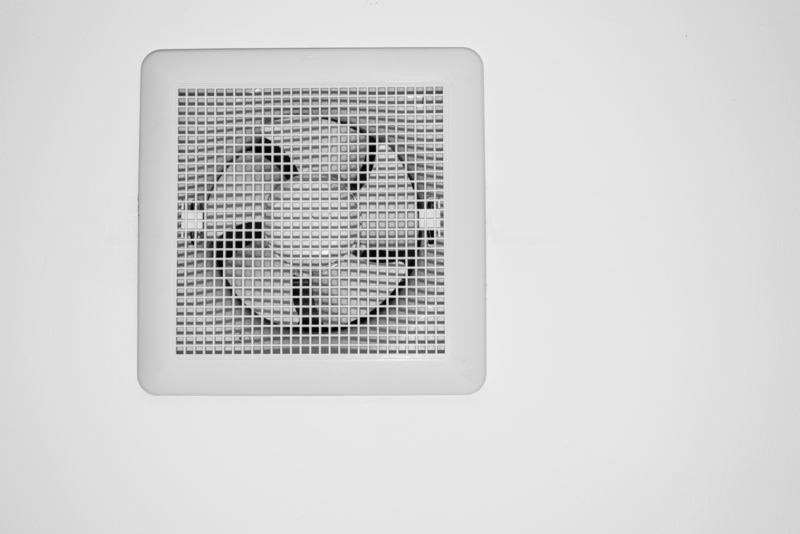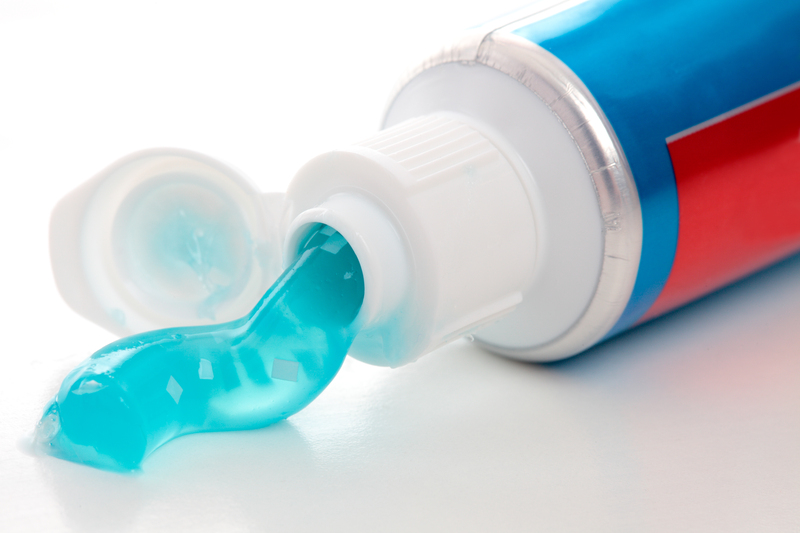Guide to Neutralizing Unwanted Damp Smells
Posted on 18/08/2025
Comprehensive Guide to Neutralizing Unwanted Damp Smells
Unpleasant, musty odors can permeate homes, offices, basements, and even vehicles, causing discomfort and embarrassment. If you've ever encountered unwanted damp smells, you know these odors can be stubborn and difficult to remove. This guide offers a step-by-step approach to neutralizing damp smells, so your spaces can smell fresh and inviting once again.

What Causes Damp Smells?
Before tackling the issue, it's crucial to understand the root causes of unwanted damp odors. Usually, these odors stem from:
- Moisture buildup: Leaks, floods, or high humidity can create the perfect environment for lingering smells.
- Mold and mildew: Tiny fungi thrive in damp settings and release spores that carry musty odors.
- Poor ventilation: Inadequate airflow prevents moisture from dissipating, exacerbating the problem.
- Organic materials: Carpets, wood, fabrics, and even drywall can absorb moisture and odors.
Why Is It Important to Neutralize Damp Smells?
Ignoring these odors is more than just unpleasant--it can be harmful. Persistent dampness and mold growth can damage property and may cause adverse health effects, such as allergies and respiratory issues. Neutralizing and removing musty smells restores your space's comfort, aesthetics, and healthfulness.
Identifying the Source of Unwanted Damp Smells
Locating the source is the first step in neutralizing any foul, musty odor. Common sources include:
- Leaks in plumbing or roofing
- Poorly sealed windows or doors
- Condensation on cold surfaces
- Basement walls and floors
- Damp carpets, rugs, or upholstery
Thoroughly inspect your smelly areas for water stains, discoloration, or visible mold. Pinpointing the source enables direct and effective action.
Effective Strategies to Remove Damp Smells
Improve Ventilation
- Open windows and doors regularly to promote airflow.
- Use exhaust fans in kitchens, bathrooms, and laundry rooms.
- Consider installing air vents or a whole-house ventilation system if possible.
- Good ventilation is key to eliminating excess moisture and, therefore, odors.
Reduce Humidity Levels
- Run a dehumidifier in damp areas, such as basements or bathrooms.
- Use moisture-absorbing desiccants like silica gel, activated charcoal, or commercial products.
- Fix leaks and seal cracks in foundations or walls.
- Check appliances--such as washing machines and AC units--for potential leaks or malfunctions.
Deep-Clean Problem Areas
To remove musty odors at their source, you must clean affected areas thoroughly:
- Scrub hard surfaces (walls, floors, tiles) with a mixture of water and vinegar or baking soda.
- Wash fabrics and curtains using a hot water cycle and specialized odor-neutralizing detergents.
- Consider steam-cleaning or professionally cleaning carpets and upholstered furniture.
- Do not forget hidden places such as under sinks, behind furniture, and inside closets.
Remove and Replace Damaged Materials
- Discard severely moldy carpeting, insulation, or drywall.
- If a particular item (like old books or papers) cannot be cleaned and continues to emit an odor, it may be best to recycle or dispose of it.
Neutralize Odors with Proven Remedies
Once you've dried and cleaned the affected areas, use these odor-neutralizing methods:
- Place baking soda bowls in musty rooms to absorb odors naturally.
- Vinegar is a natural deodorizer: leave dishes of white vinegar out overnight.
- Lemon juice can help freshen air and fabrics.
- Activated charcoal is highly effective at odor absorption--try placing charcoal sachets in closets and cupboards.
- Commercial odor absorbers or neutralizers can be helpful, especially for ongoing issues.
Specialized Solutions for Persistent Damp Smells
Dealing with Mold and Mildew
If you find visible mold or mildew, act quickly.
- Wear protective gloves and a mask to avoid inhaling spores.
- Scrub hard surfaces with a 1:1 bleach and water solution.
- Rinse and dry the area completely to prevent regrowth.
- For larger mold infestations, consult professional remediation services.
Carpets and Rugs
- Sprinkle baking soda generously, let it sit overnight, and vacuum in the morning.
- Deep-clean with a steam cleaner.
- If the odor persists, carpet padding or underlayment may need replacement.
Upholstery and Fabrics
- Wash machine-safe items with a cup of vinegar added to the rinse cycle.
- Sun-dry blankets and pillows when possible--sunlight is a natural deodorizer!
- For upholstered furniture, spot-clean with a fabric-safe deodorizer.
Dealing with Damp Basements
- Check and repair any foundation cracks.
- Ensure gutters and downspouts direct water away from your home's foundation.
- Install a sump pump if the area is prone to flooding.
- Consider painting basement walls with moisture-resistant sealants.
Prevention: Tips to Keep Damp Smells Away
The best way to neutralize unwanted damp smells is to prevent them from developing.
Routine Maintenance
- Inspect plumbing and roofing for leaks regularly.
- Keep gutters and downspouts clean and functioning.
- Maintain seals around windows and doors.
Control Moisture and Humidity
- Monitor your home's humidity levels--aim for 30-50% humidity.
- Use exhaust fans in moisture-producing rooms.
- Store items off the basement floor on shelves or pallets.
Cleanliness is Key
- Vacuum and clean carpets routinely.
- Wash bedding, curtains, and upholstery regularly.
- Declutter to prevent hidden moist spots.
Natural and Commercial Products to Neutralize Damp Odors
Natural Deodorizers
These solutions are effective, environmentally friendly, and usually already found at home:
- Baking soda
- Vinegar
- Lemon juice
- Activated charcoal
- Coffee grounds (dried)
Store-Bought Odor Neutralizers
- Odor-absorbing gels or crystals
- HEPA air purifiers with carbon filters
- Fabric and room sprays that neutralize, not just mask, odors
Always follow manufacturer instructions to ensure safety and proper results.
When to Seek Professional Help
Should damp odors persist after your efforts--or you find extensive mold or mildew growth--it's time to call in experts. Professional remediation teams have access to advanced equipment and chemicals to safely and effectively neutralize severe damp odors and resolve underlying issues.
Summary: Achieve a Fresh, Odor-Free Space
- Identify and repair the source of dampness.
- Increase ventilation and decrease humidity.
- Deep-clean and dry all affected materials.
- Neutralize lingering odors using natural or commercial products.
- Maintain a clean, dry environment to prevent recurrence of unwanted damp smells.
Tackling musty, damp odors may require effort, but the rewards are significant--a healthier, more comfortable, and welcoming environment for everyone. Take charge today using these comprehensive strategies to neutralize unwanted damp smells for good.

Frequently Asked Questions (FAQs)
How long does it take to remove unwanted damp smells?
It depends on the severity and how quickly you address the source. Minor odors may dissipate within a few days, while severe mold problems can take weeks and might require professional help.
Are air fresheners effective for neutralizing damp odors?
Air fresheners may mask the smell temporarily, but they do not neutralize or eliminate damp odors at their source. Addressing underlying moisture and cleaning thoroughly are essential for permanent odor removal.
Is it safe to use bleach to clean moldy areas?
When used properly, diluted bleach can be effective for cleaning hard surfaces. Always wear protective gear and ensure proper ventilation. Never mix bleach with ammonia or other cleaners.
How can I prevent unwanted damp smells in my basement?
Keep your basement dry and well-ventilated. Use dehumidifiers, fix leaks, and seal cracks. Regularly check and clean sump pumps and ensure proper drainage around your foundation.
Can house plants help reduce damp smells?
Certain plants like peace lily and English ivy can slightly improve air quality and absorb some odors, but they will not eliminate damp smells from persistent moisture or mold problems. Structural and cleanliness measures are more effective.
Conclusion
Neutralizing unwanted damp smells is achievable by identifying sources, reducing moisture, thorough cleaning, and applying proven odor-neutralizing techniques. With prevention and routine care, you can ensure your home or office stays fresh and inviting year-round. Don't let musty odors take over--restore your space to its clean, healthy best today!




